Abstract
An automated neutralization test for influenza B virus is described in which antibody titers are determined according to the release of neutral red from infected or uninfected cells of the Madin-Darby canine kidney line. Endpoints are determined in a standard enzyme-linked immunosorbent assay reader. The test requires no expensive immunologic reagents and was used to evaluate responses to both vaccination and natural infection against influenza B virus. Overall responses to vaccination were comparable with those obtained by hemagglutination inhibition, using Tween-ether-split influenza B/Ann Arbor/1/86 virus as the antigen (the HI-TE test). The sensitivities of neutralization responses compared with those obtained by the HI-TE test for two vaccines were 88 and 89%; the specificities were lower at 61 and 60%, respectively. Responses to vaccination, measured by hemagglutination inhibition, were significantly higher with split virus compared with whole virus. However, seroconversion by both the HI-TE and neutralization tests was observed in 5 of 10 individuals from whom virus was detected by either culture of nasal or throat washings or the presence of antigen from immunofluorescence in cells from nasal washings.
Full text
PDF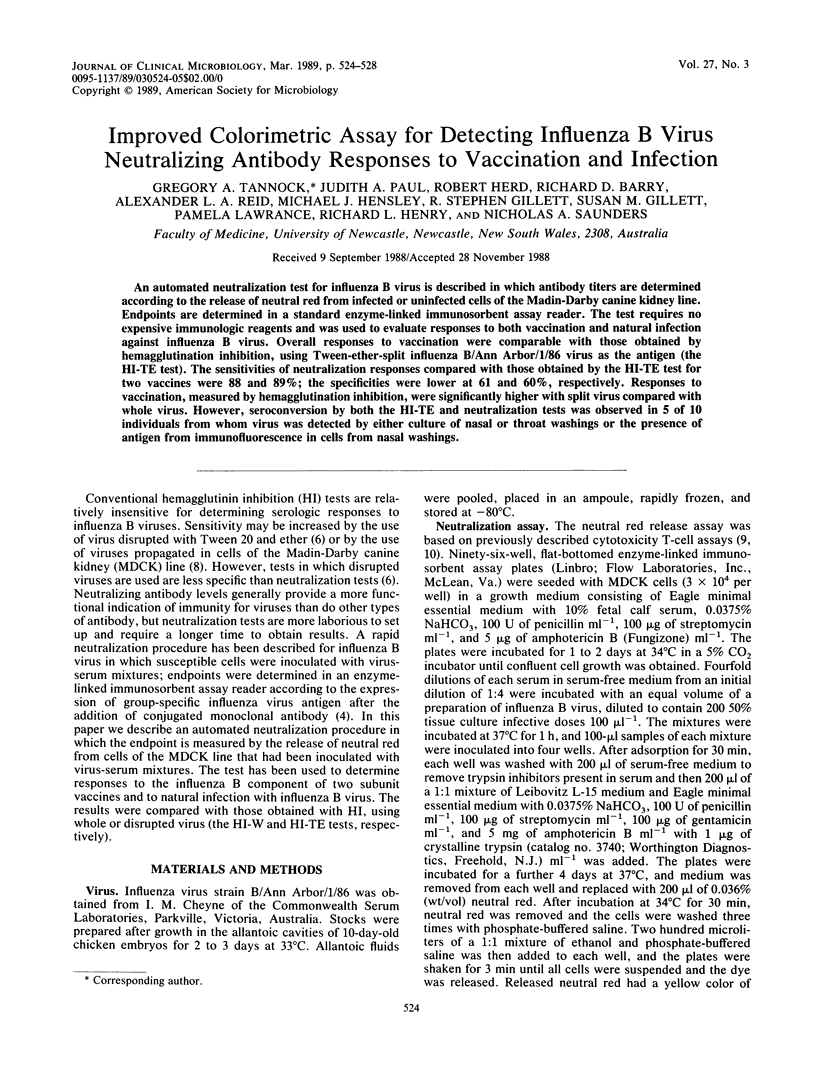
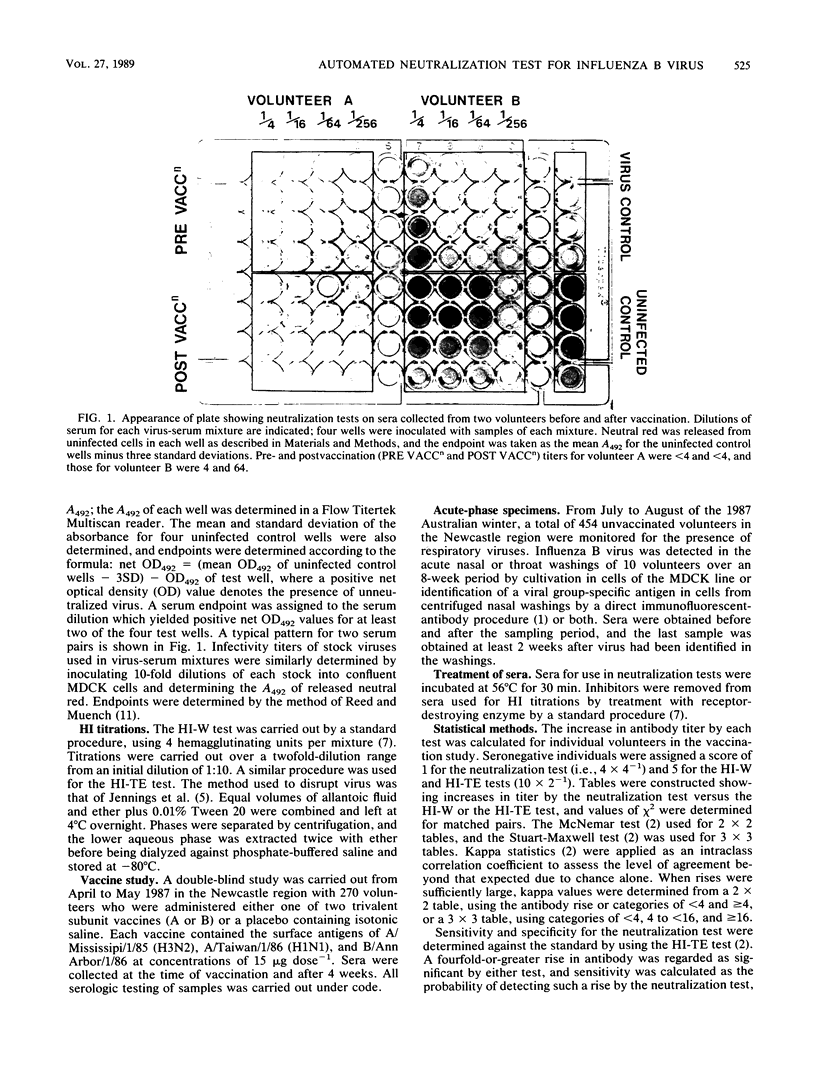
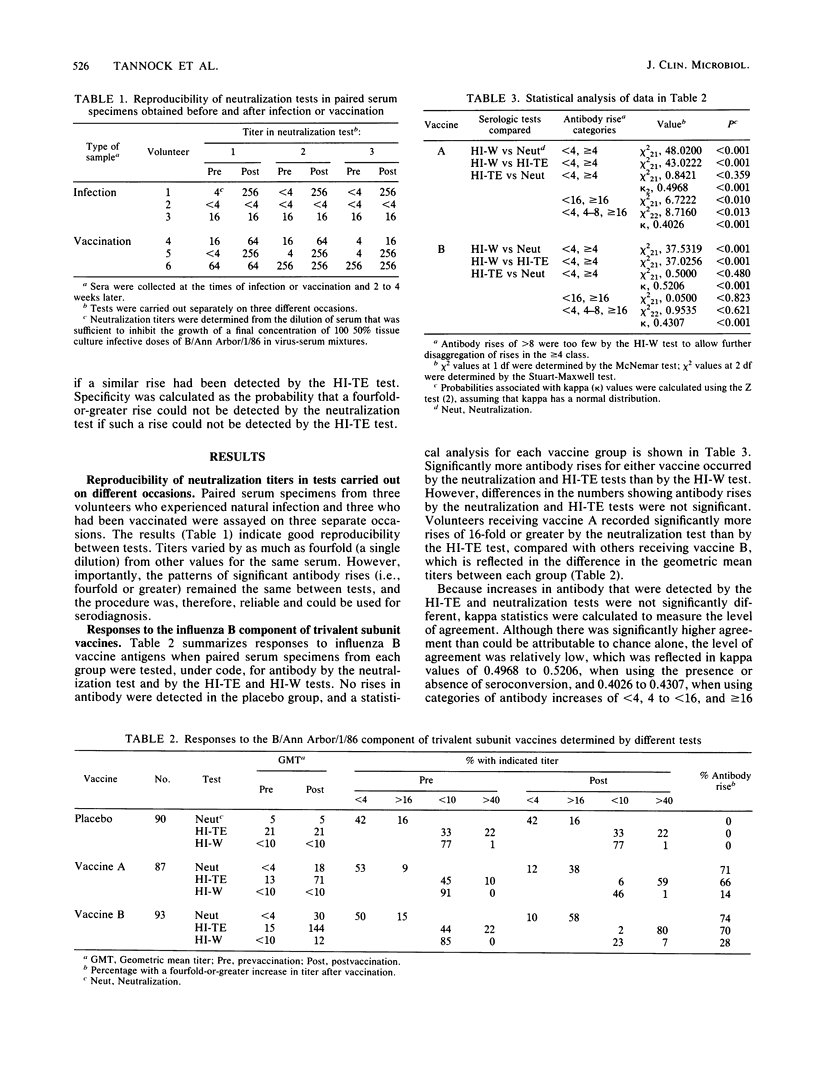
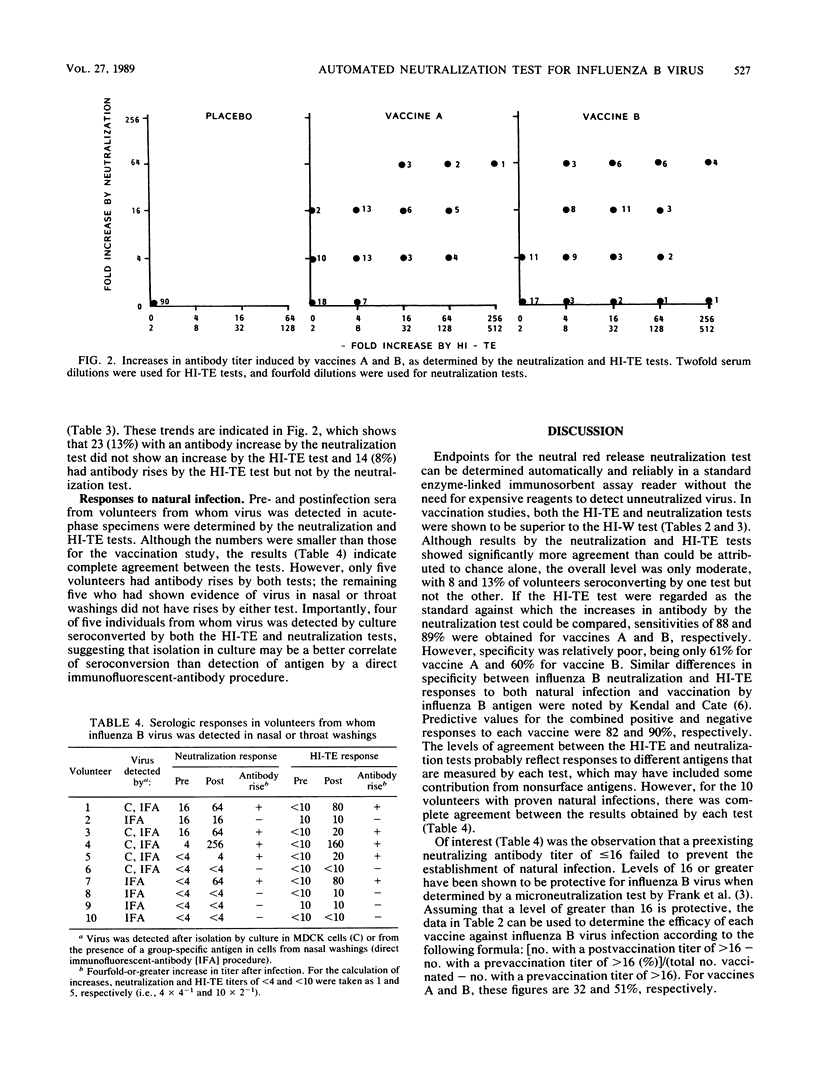
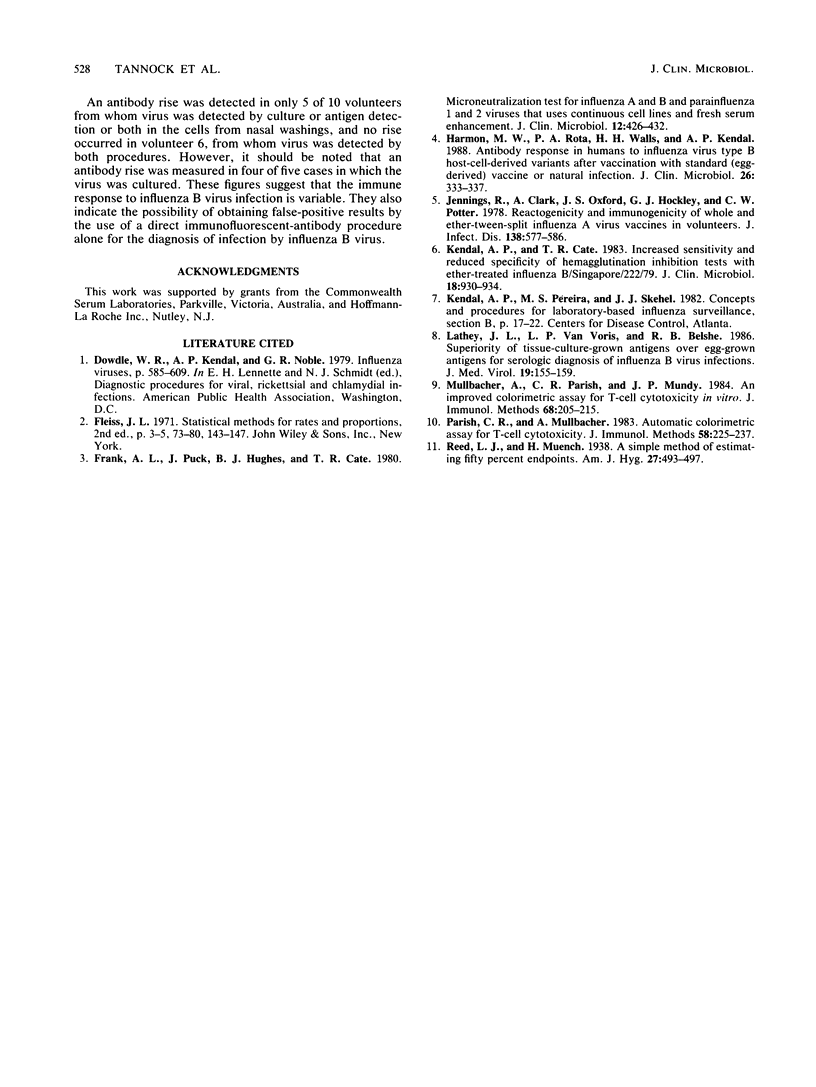
Images in this article
Selected References
These references are in PubMed. This may not be the complete list of references from this article.
- Frank A. L., Puck J., Hughes B. J., Cate T. R. Microneutralization test for influenza A and B and parainfluenza 1 and 2 viruses that uses continuous cell lines and fresh serum enhancement. J Clin Microbiol. 1980 Sep;12(3):426–432. doi: 10.1128/jcm.12.3.426-432.1980. [DOI] [PMC free article] [PubMed] [Google Scholar]
- Harmon M. W., Rota P. A., Walls H. H., Kendal A. P. Antibody response in humans to influenza virus type B host-cell-derived variants after vaccination with standard (egg-derived) vaccine or natural infection. J Clin Microbiol. 1988 Feb;26(2):333–337. doi: 10.1128/jcm.26.2.333-337.1988. [DOI] [PMC free article] [PubMed] [Google Scholar]
- Jennings R., Clark A., Oxford J. S., Hockley D. J., Potter C. W. Reactogenicity and immunogenicity of whole and ether-Tween-split influenza A virus vaccines in volunteers. J Infect Dis. 1978 Nov;138(5):577–586. doi: 10.1093/infdis/138.5.577. [DOI] [PubMed] [Google Scholar]
- Kendal A. P., Cate T. R. Increased sensitivity and reduced specificity of hemagglutination inhibition tests with ether-treated influenza B/Singapore/222/79. J Clin Microbiol. 1983 Oct;18(4):930–934. doi: 10.1128/jcm.18.4.930-934.1983. [DOI] [PMC free article] [PubMed] [Google Scholar]
- Lathey J. L., Van Voris L. P., Belshe R. B. Superiority of tissue-culture-grown antigens over egg-grown antigens for serologic diagnosis of influenza B virus infections. J Med Virol. 1986 Jun;19(2):155–159. doi: 10.1002/jmv.1890190208. [DOI] [PubMed] [Google Scholar]
- Müllbacher A., Parish C. R., Mundy J. P. An improved colorimetric assay for T cell cytotoxicity in vitro. J Immunol Methods. 1984 Mar 30;68(1-2):205–215. doi: 10.1016/0022-1759(84)90151-0. [DOI] [PubMed] [Google Scholar]
- Parish C. R., Müllbacher A. Automated colorimetric assay for T cell cytotoxicity. J Immunol Methods. 1983 Mar 11;58(1-2):225–237. doi: 10.1016/0022-1759(83)90277-6. [DOI] [PubMed] [Google Scholar]



